on Monday, December 15th, 2025 1:04 | by Julia Schulz
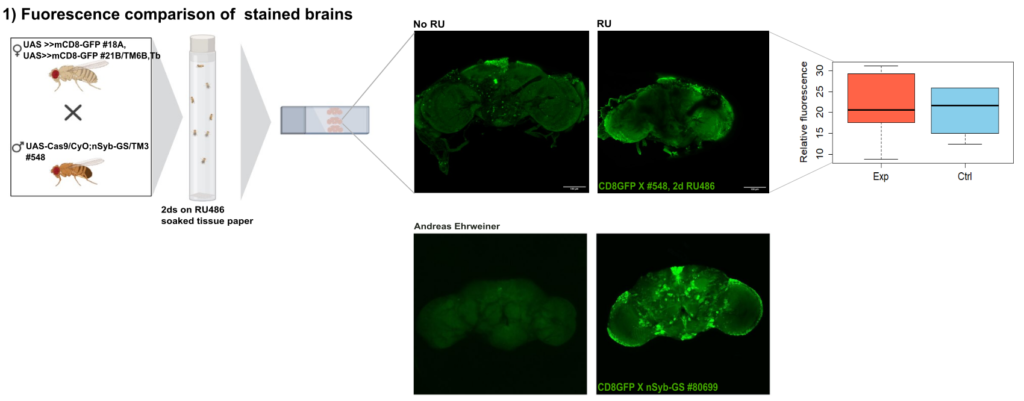
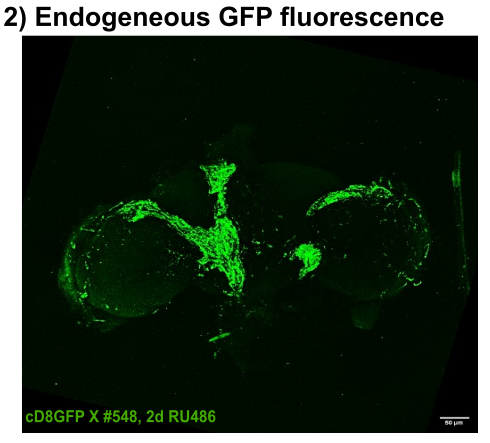
Category: Anatomy, crosses, genetics | No Comments
MBON02 Trans-tango images
on Monday, December 15th, 2025 12:37 | by Ipek Subay
MBON02 trans-tango image from Kaun Lab. Left image shows trans-tango signal in red, right image shows overlay of all channels (green for MBON02, red for trans-tango, blue for nc82):

My MBON02 trans-tango images stained with anti-HA instead of anti-RFP. Flies generated by crossing trans-tango mkII line (BDSC: 95317) with MB399B (Brembslab stock number: 319). Left shows trans-tango signal in green, right shows overlay of al channels (green for trans-tango, blue for MBON02, red for nc82):
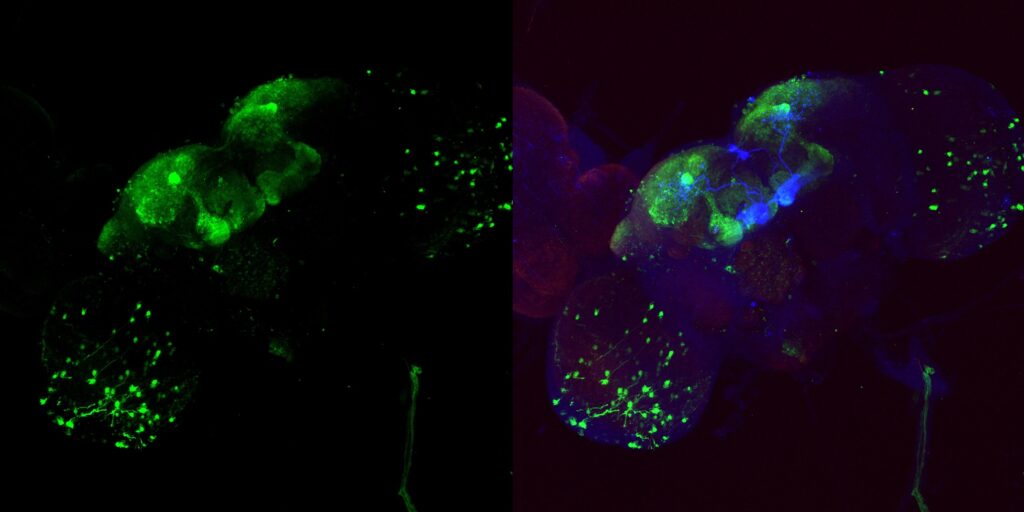

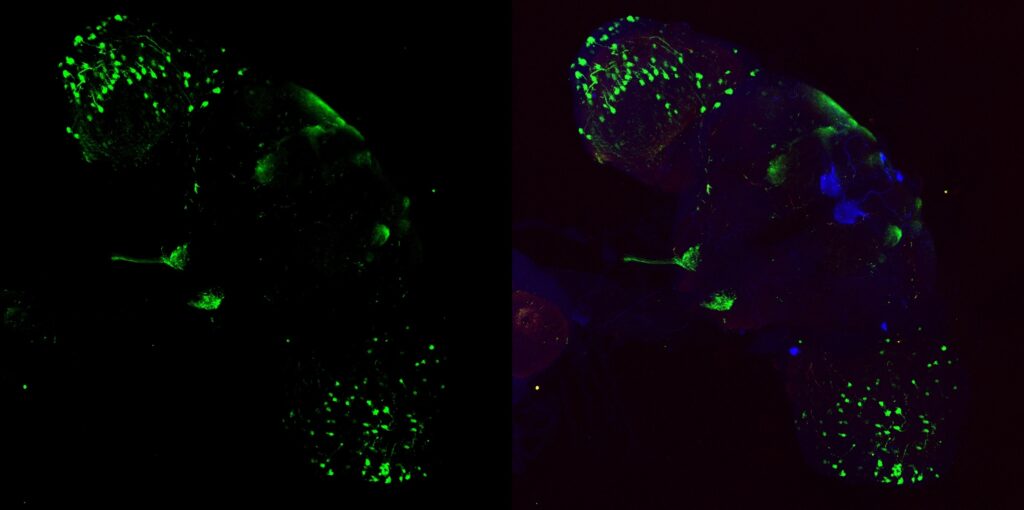
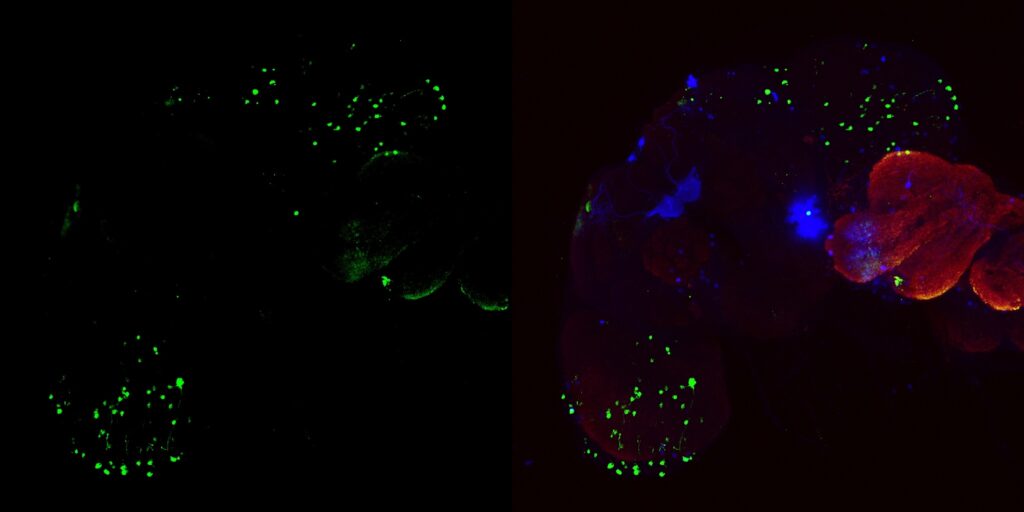
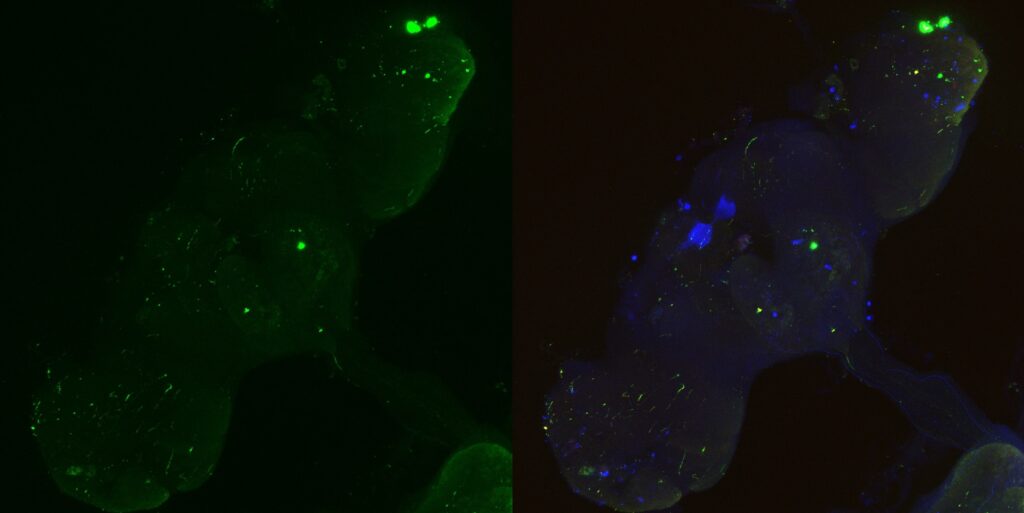
Janelia Flylight image of MB399B with 20XUAS-CsChrimson-mVenus trafficked in attP18 reporter:

Category: Habit formation, MBON, MBON, trans-tango | No Comments
Torque learning results 12.12.2025 FBK
on Monday, December 15th, 2025 10:52 | by Fridrik Kjartansson
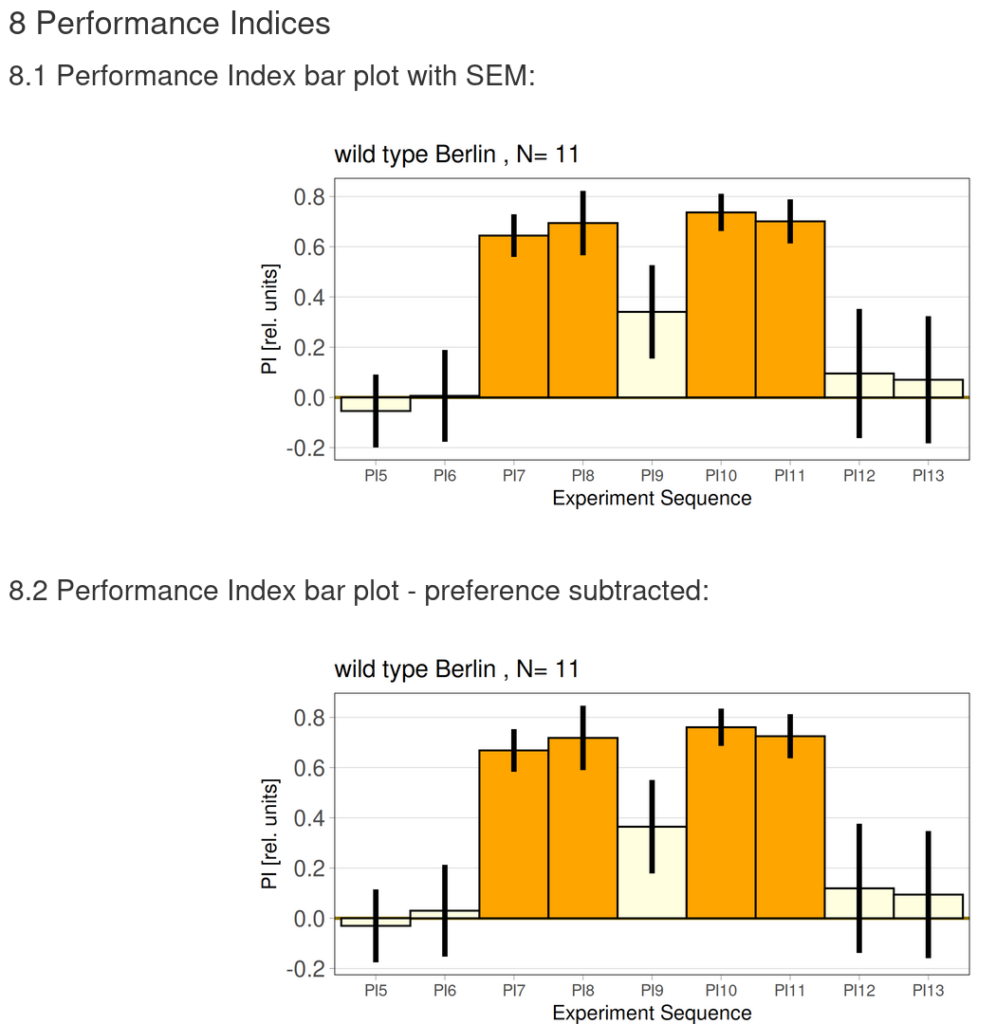
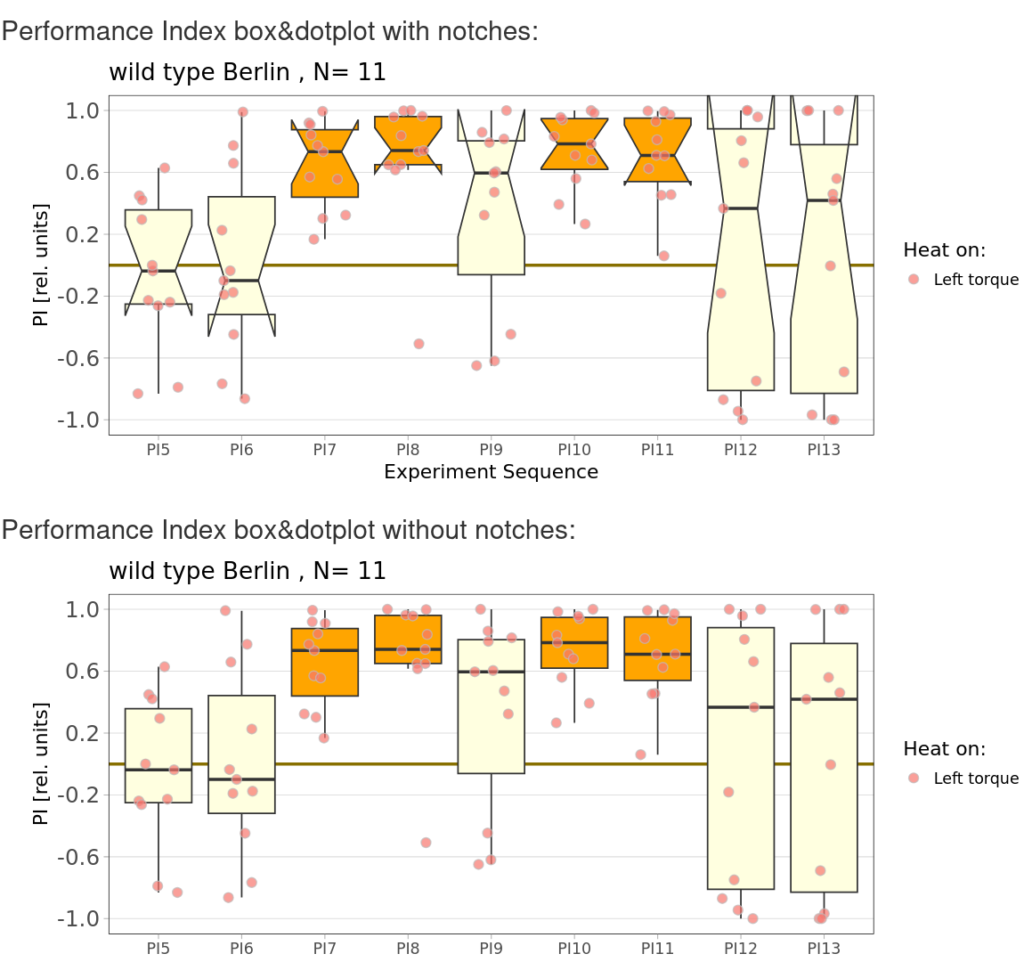
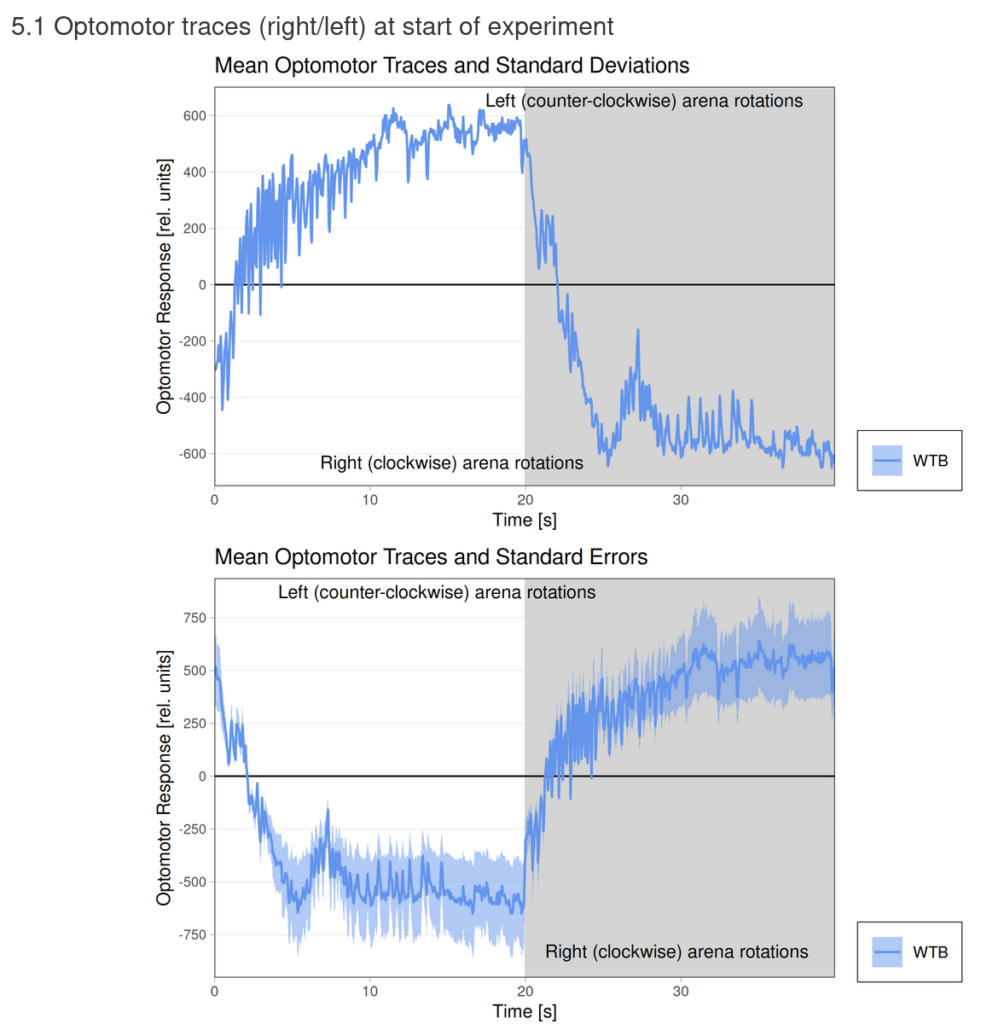
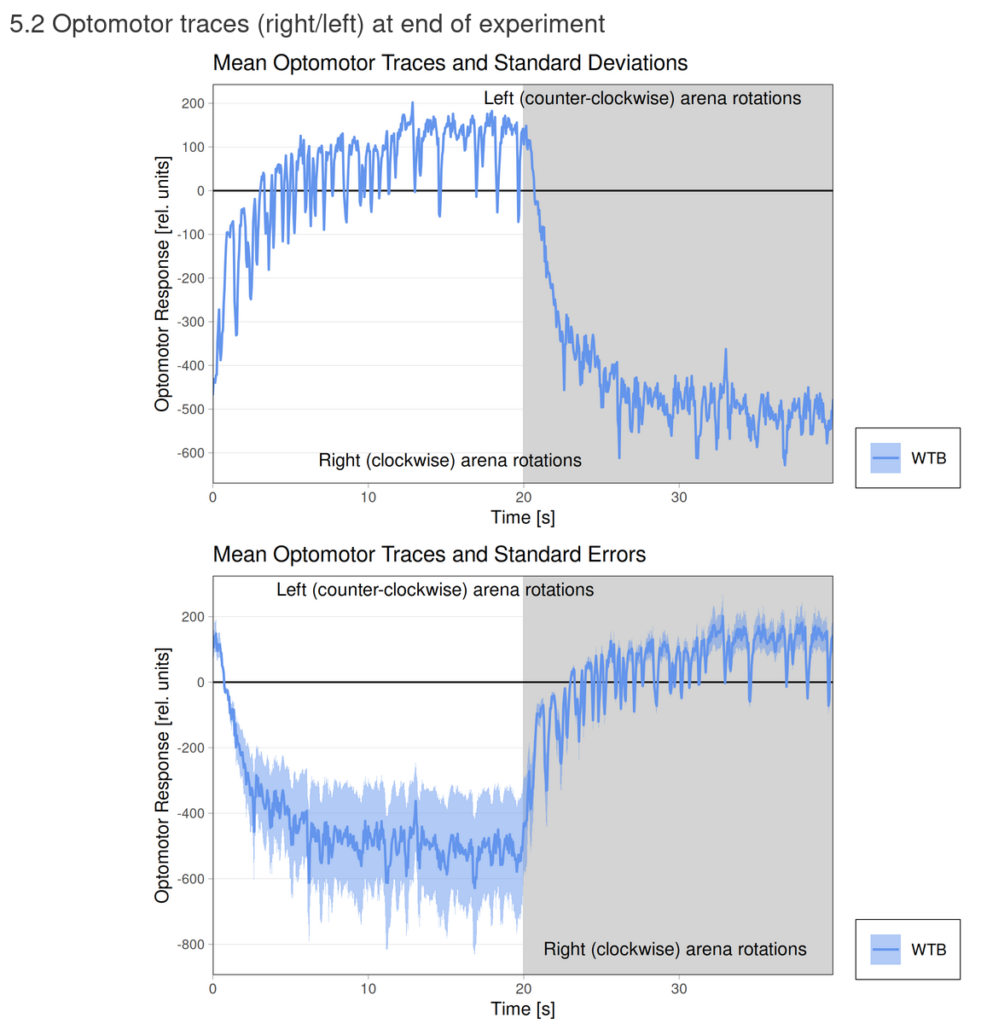
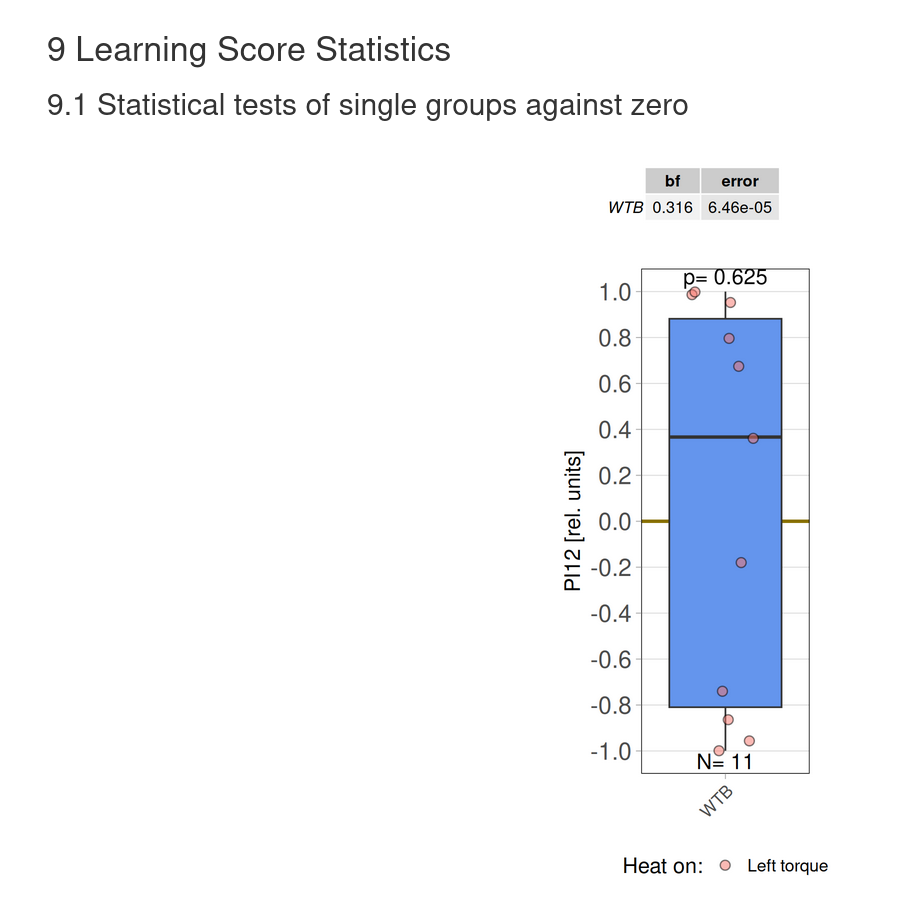
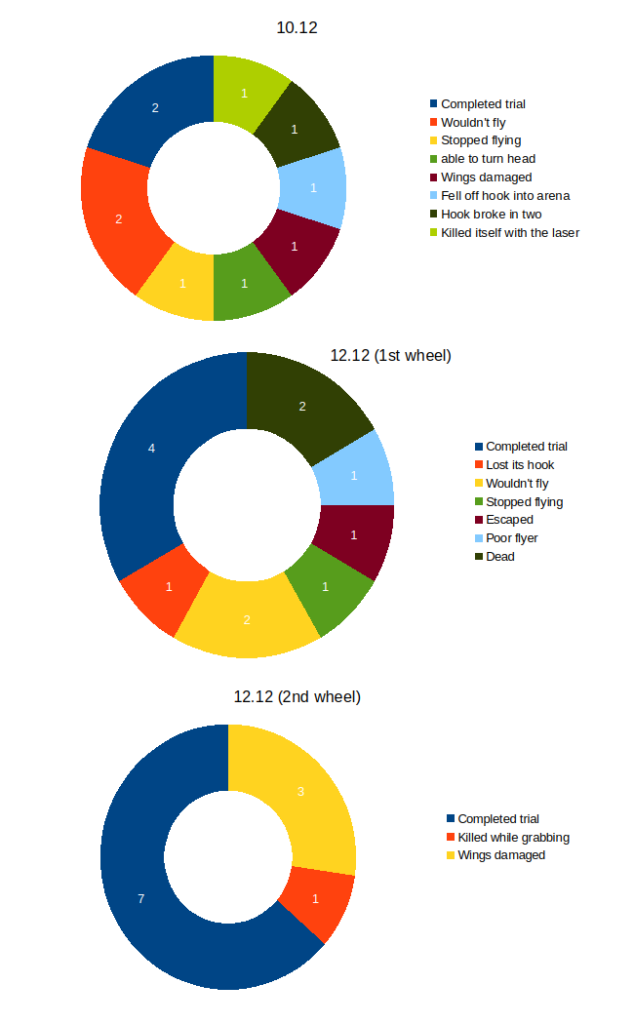
Category: flight, Operant learning, operant self-learning, Optomotor response | No Comments
Salt avoidance
on Monday, December 15th, 2025 9:24 | by Radostina Lyutova
5 days old larvae (3rd instar) were tested for their salt (1.5 M) avoidance behavior. Dopaminergic neurons from the TH-D1 cluster were activated upon ChR2-XXL expression and blue light exposure, respectively.
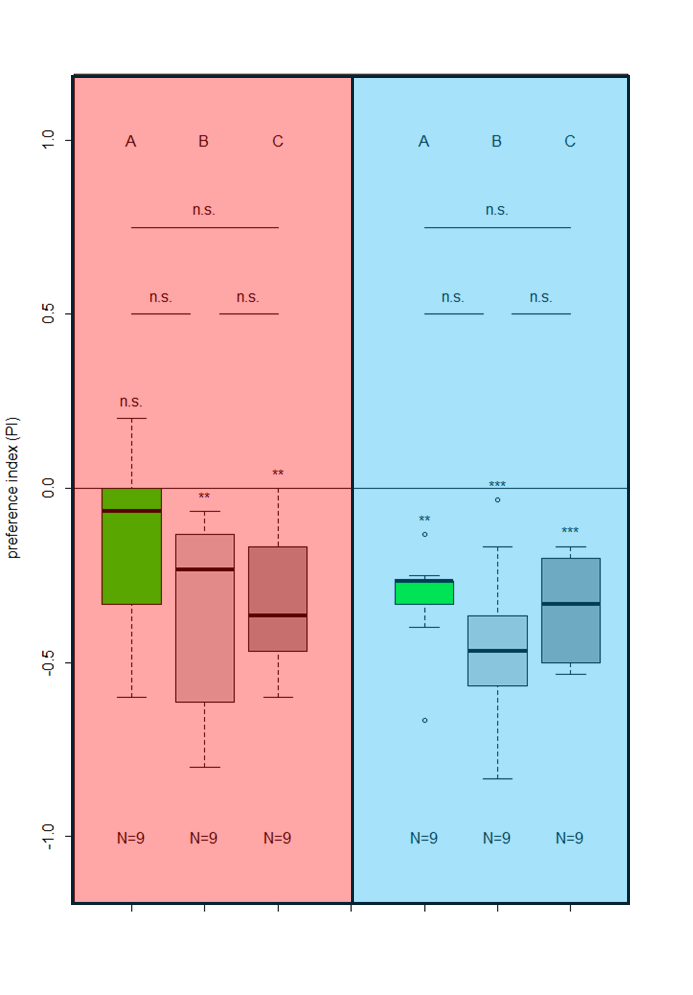
Category: Biogenic Amines, DAN, Food preference, Larvae, neuronal activation | No Comments
Final results of yellow light T-Maze experiments with dopamine depletion using 3IY
on Saturday, December 13th, 2025 6:15 | by Daniel Döringer
In previous experiments we tested flies expressing the optogenetic CsChrimson channel in PPM2 neurons. We observed mild avoidance at 1 minute, which decreased over the time course of 10 minutes, even leading to positive choice indices. To verify whether the observed effect was instructed by dopaminergic signaling, I depleted flies of dopamine using the competitive tyrosine-hydroxylase inhibtor 3-Iodo-L-Tyrosine, and tested flies again in red and yellow light T-Maze, for 1 and 10 minutes. The figure below shows the results for the yellow light T-Maze. Although we can see the same trend from avoidance in the beginning to mild approach after 10 minutes, this effect was not significant. For the 3IY treated experimental groups, we can assume that the general effect mediated by these neurons seems to be absent, when animals are depleted of dopamine.
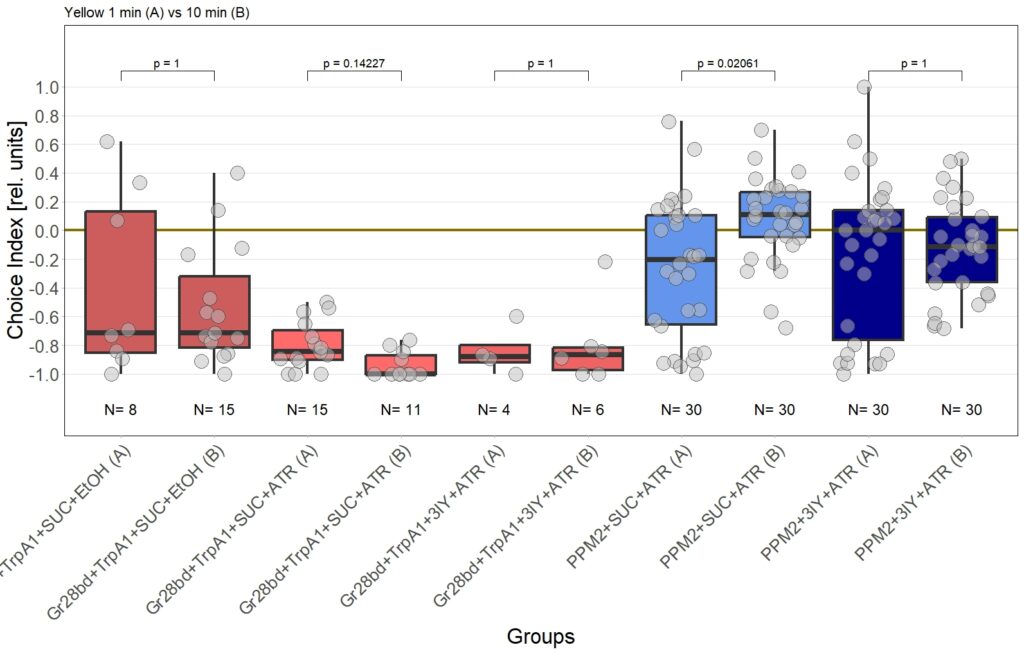
Although I could not observe a significant effect here, I plan to follow up these experiments with yet another set of T-Maze experiments. This time I plan to actively activate the neurons prior to testing. I hypothesize, that prolonged activation of the neurons might affect their valence for the animal and therefore expect animals which experienced this activation to show differences in 1 minute testing.
Category: Optogenetics | No Comments
Confocal images
on Monday, December 8th, 2025 12:59 | by Julia Schulz

Category: Anatomy, crosses, Operant learning | No Comments
Confocal Images Trans-Tango, Retro-Tango
on Monday, December 8th, 2025 12:44 | by Ipek Subay
MBON02 cells are clearly visible on green channel but there is no clear cell signal on red channel.

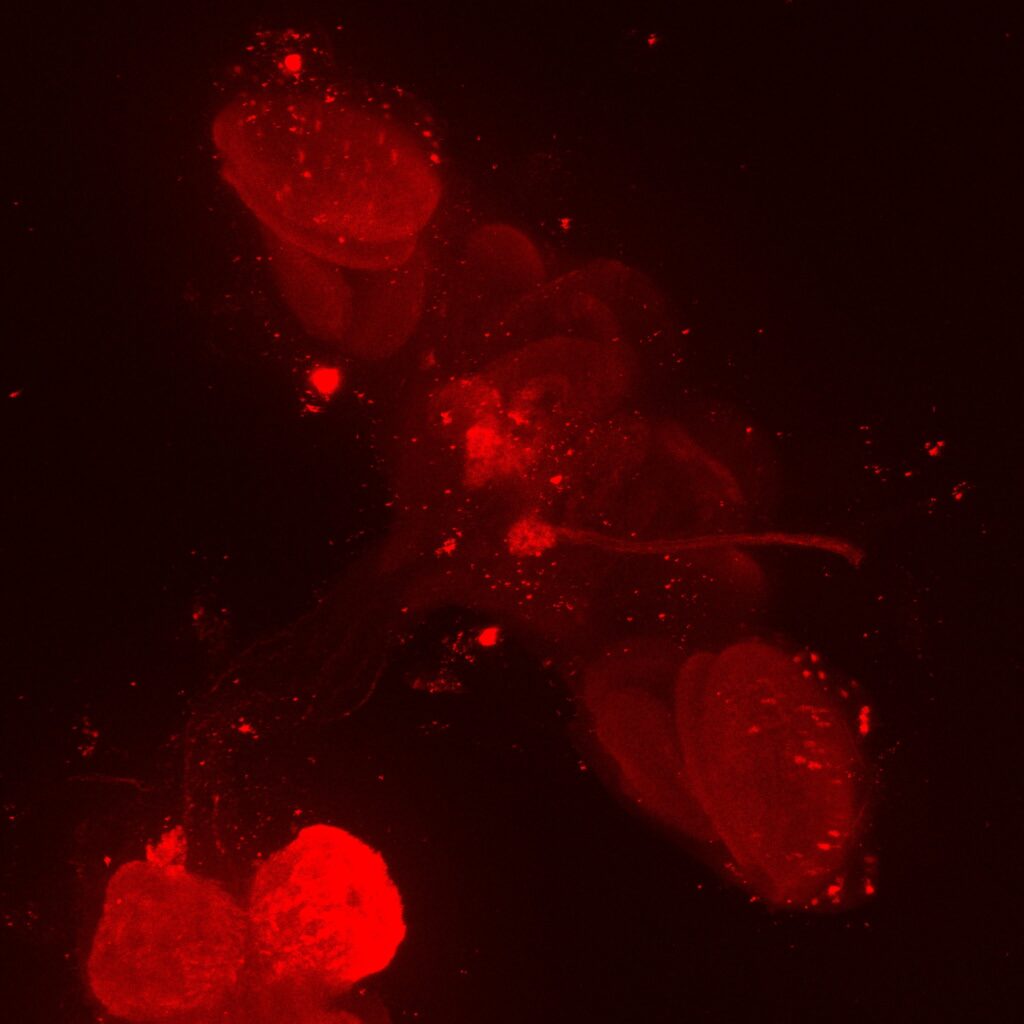
Here is the trans-tango image of MBON02 from Kaun Lab:
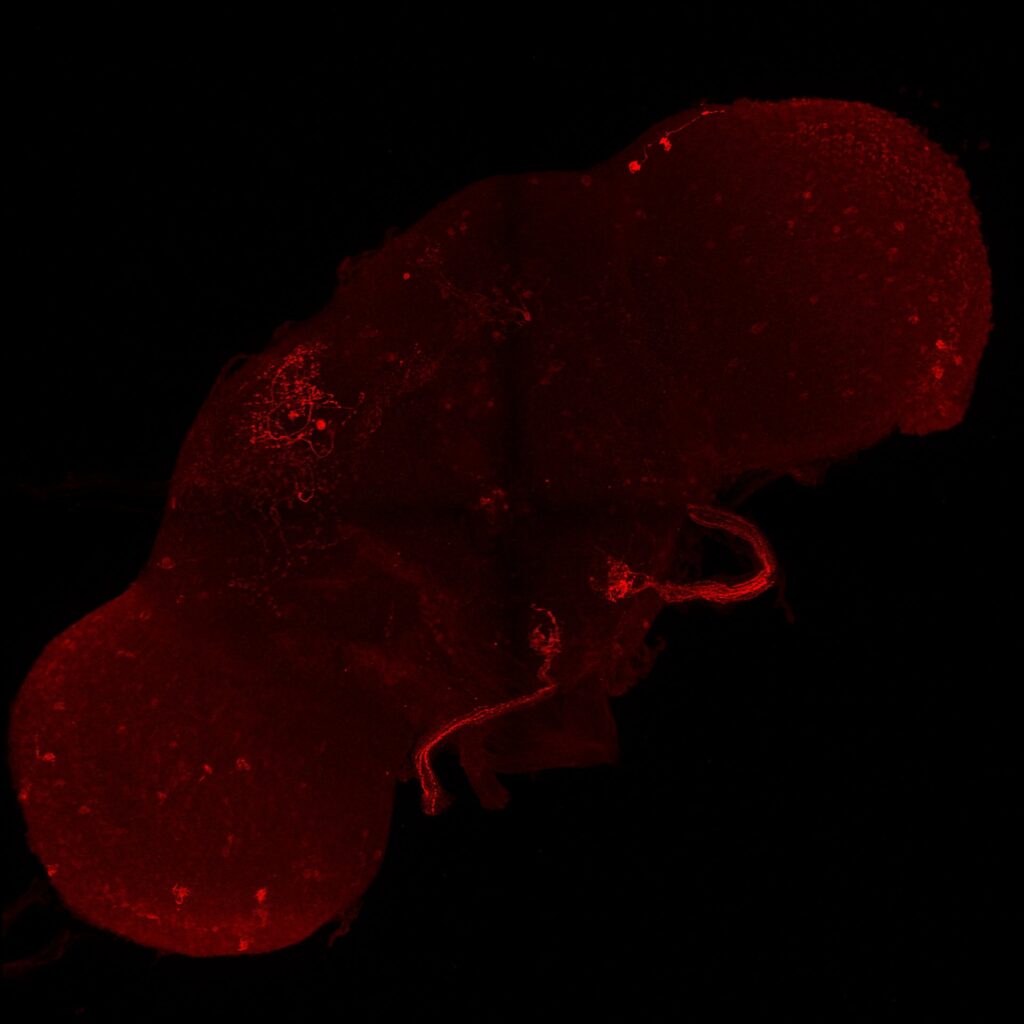
Retro-Tango of b3 mns look worse, nearly no cell signal both in green (b3 mn) and red channels (b3 mn presynaptic neurons)
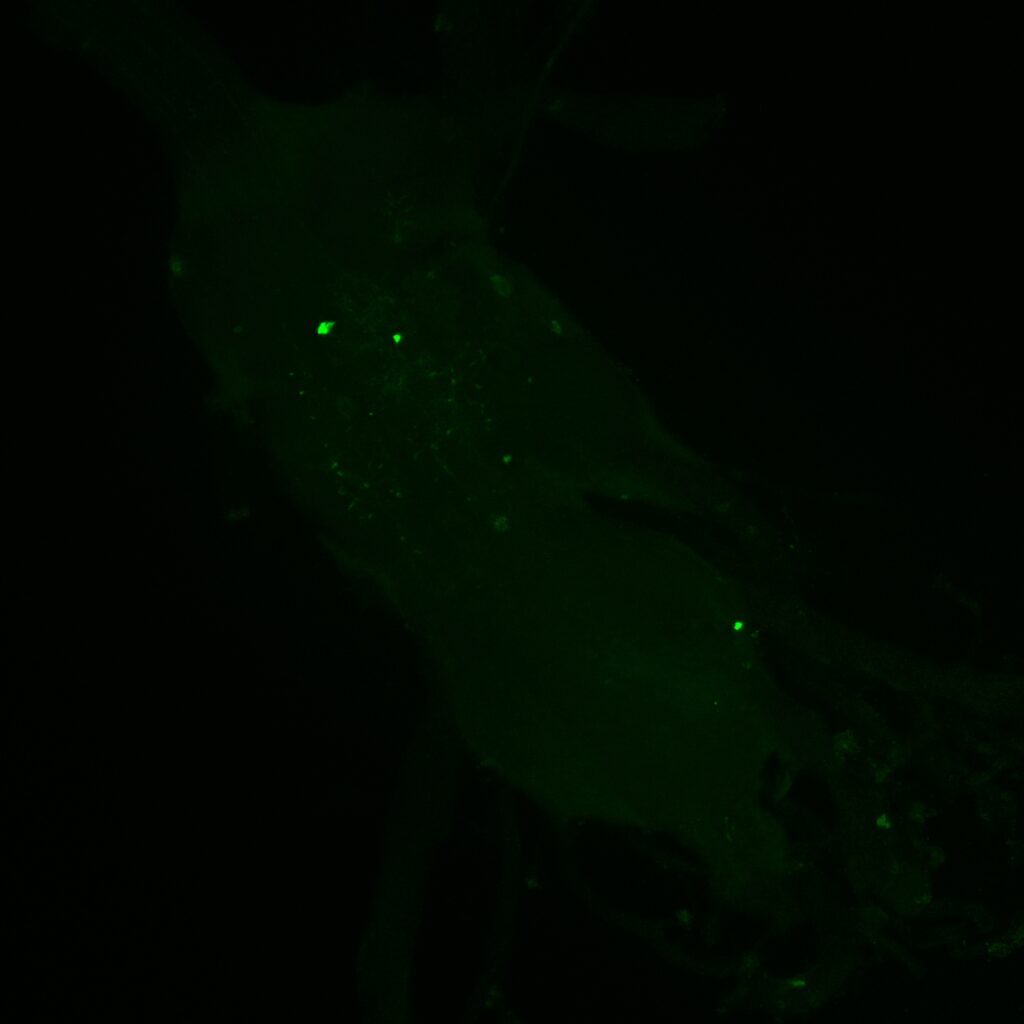
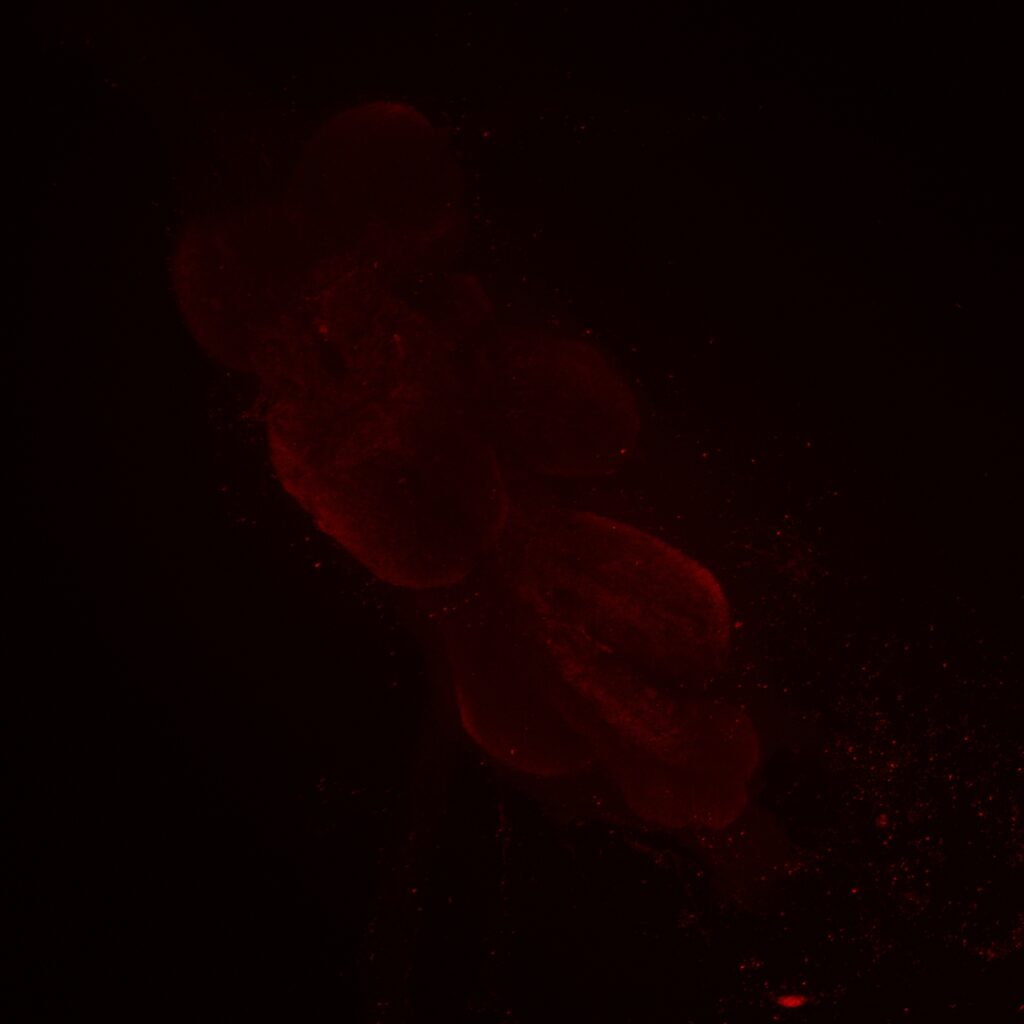
Category: Habit formation, MBON, MBON | No Comments
Current T-Maze results and power analysis
on Friday, December 5th, 2025 2:35 | by Daniel Döringer
I am currently still performing T-Maze experiment with red light, to check for dopamine dependency of the effect I observed in the original 1 vs. 10 minute T-Maze experiments using yellow light and PPM2 flies.
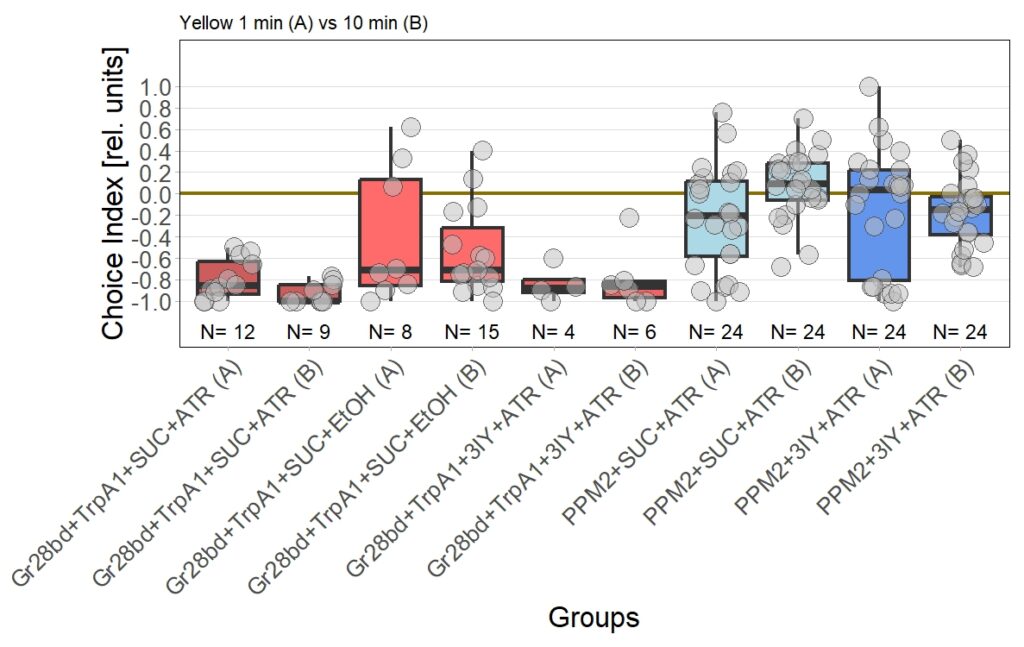
For now I planned to aim for a sample size of 30 experiments per experimental group, with the justification that this was also was I aimed for in the original screen. To see whether this sample size is sufficient to verify the effect (or it’s absence) I performed a power analysis and based it on the previously observed effect size.
Cohen’s d (from original screen) = -1.023 (large effect)
I used the power.np.wilcoxon() function from the pwrss package to calculate the sample size needed to achieve 80% statistical power with an alpha level of 0.005.

This confirmed that I would need at least 29 observations per group to detect the same effect as observed before, so I will keep aiming for a sample size of 30. Since I was unsure whether my analysis was correct I performed a second power analysis in R with an analysis script provided by ChatGPT, which calculated the sample size using simulated drawings from my original data. This analysis also resulted in a target sample size of 30 so I am fairly confident my calculations were correct.

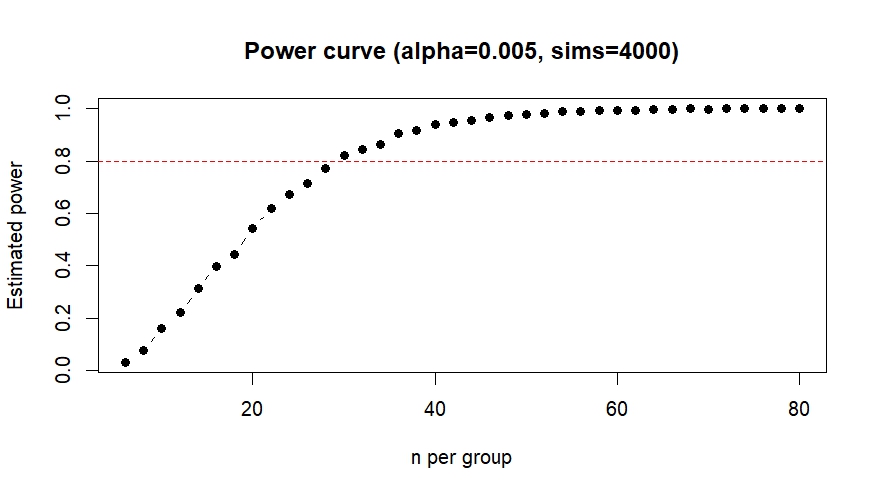
Category: Optogenetics | No Comments
Torque measurements 25.11-28.11
on Monday, December 1st, 2025 12:45 | by Fridrik Kjartansson
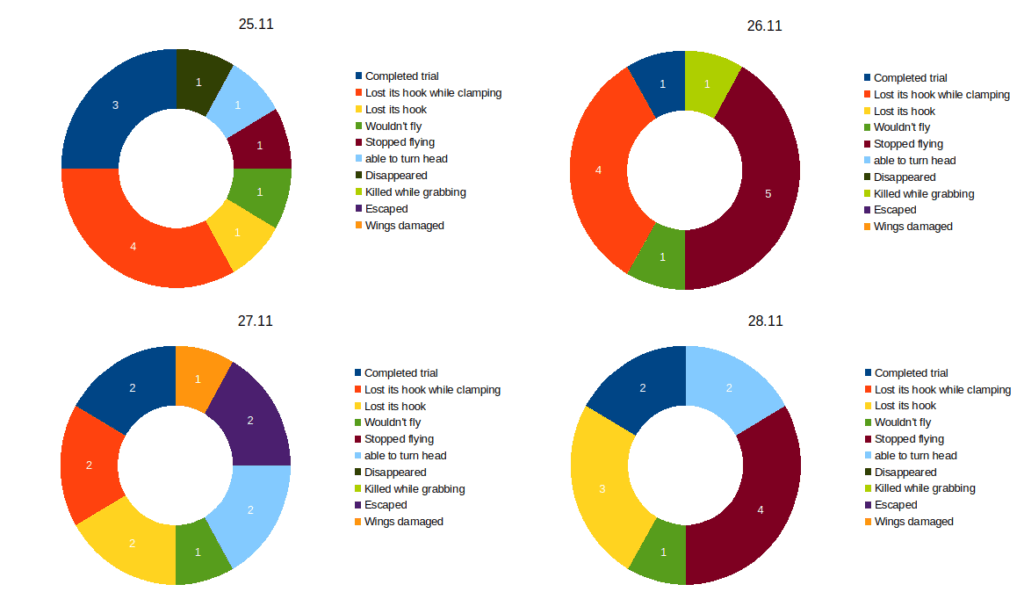
Category: flight, Habit formation, lab.brembs.net, Memory, personal | No Comments
Confocal images, gain reduced
on Monday, December 1st, 2025 12:42 | by Fridrik Kjartansson
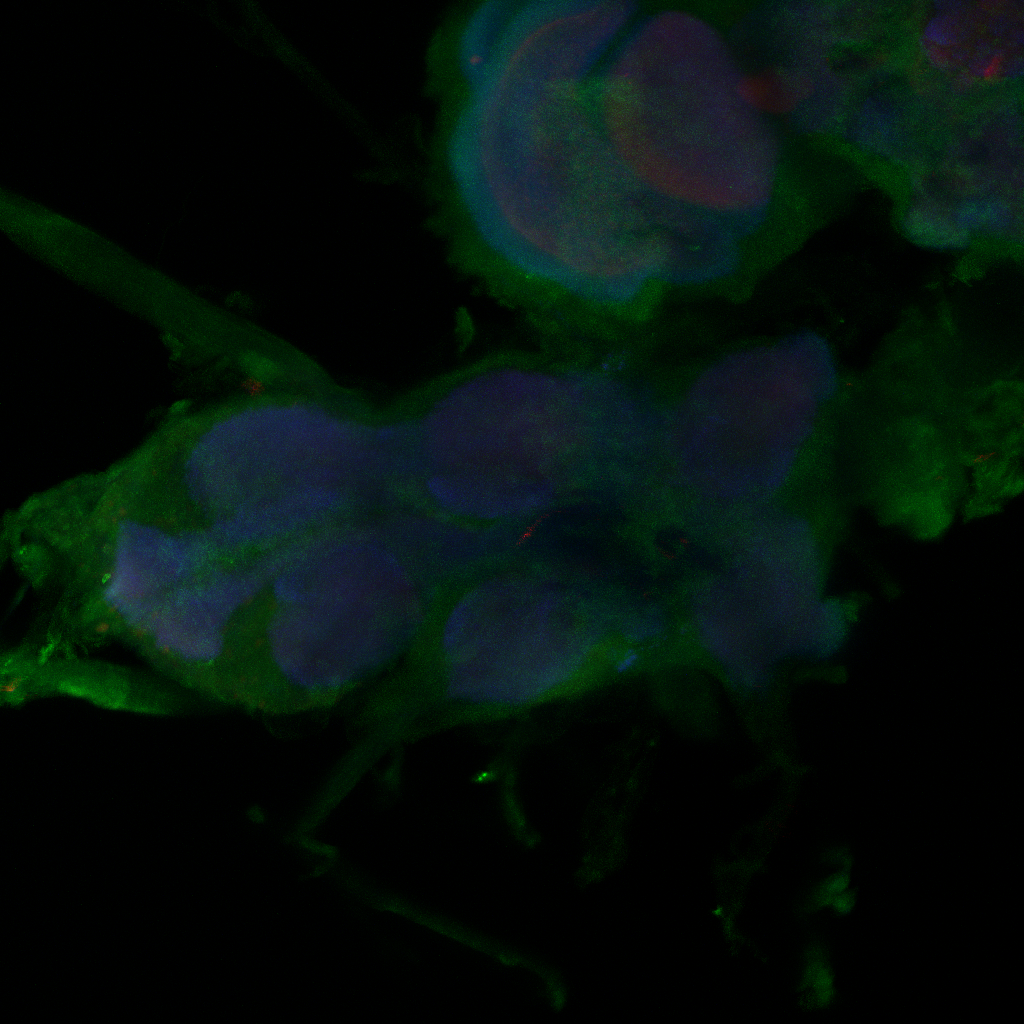
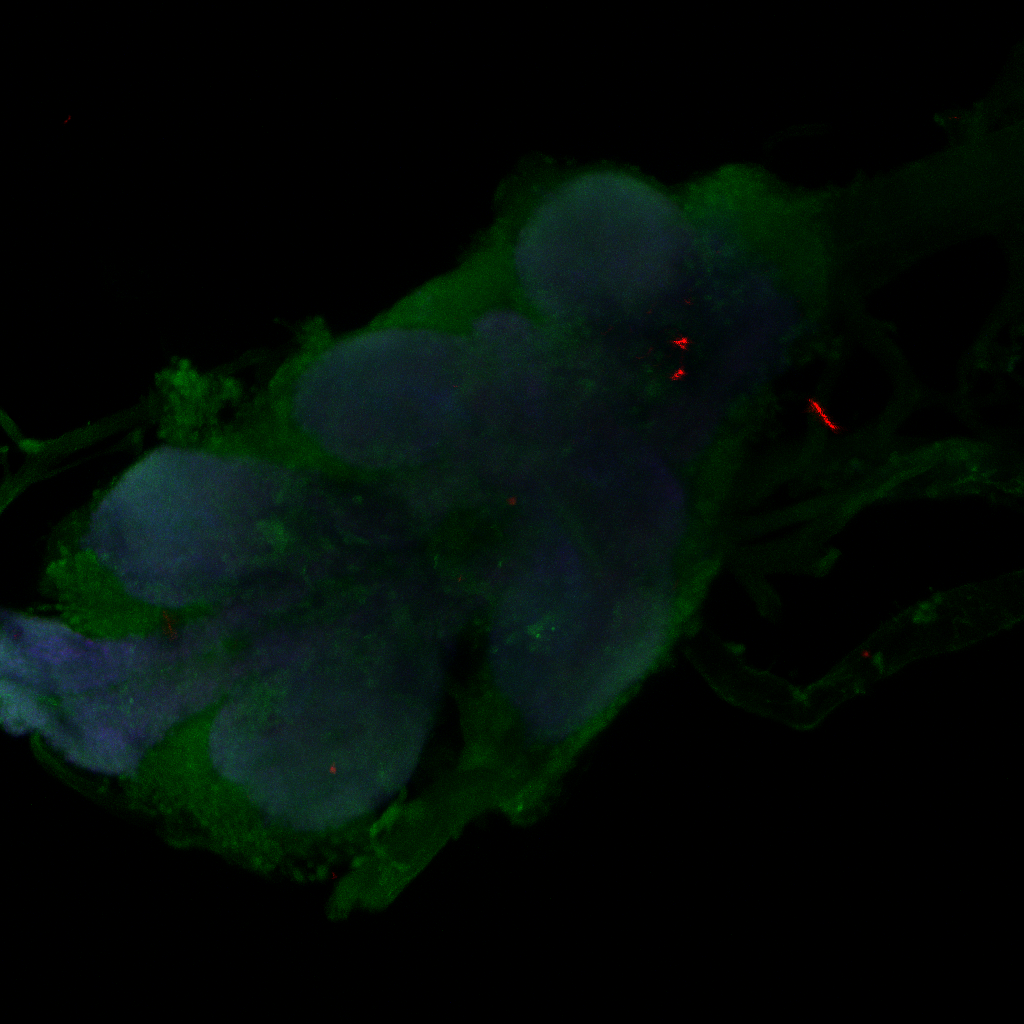
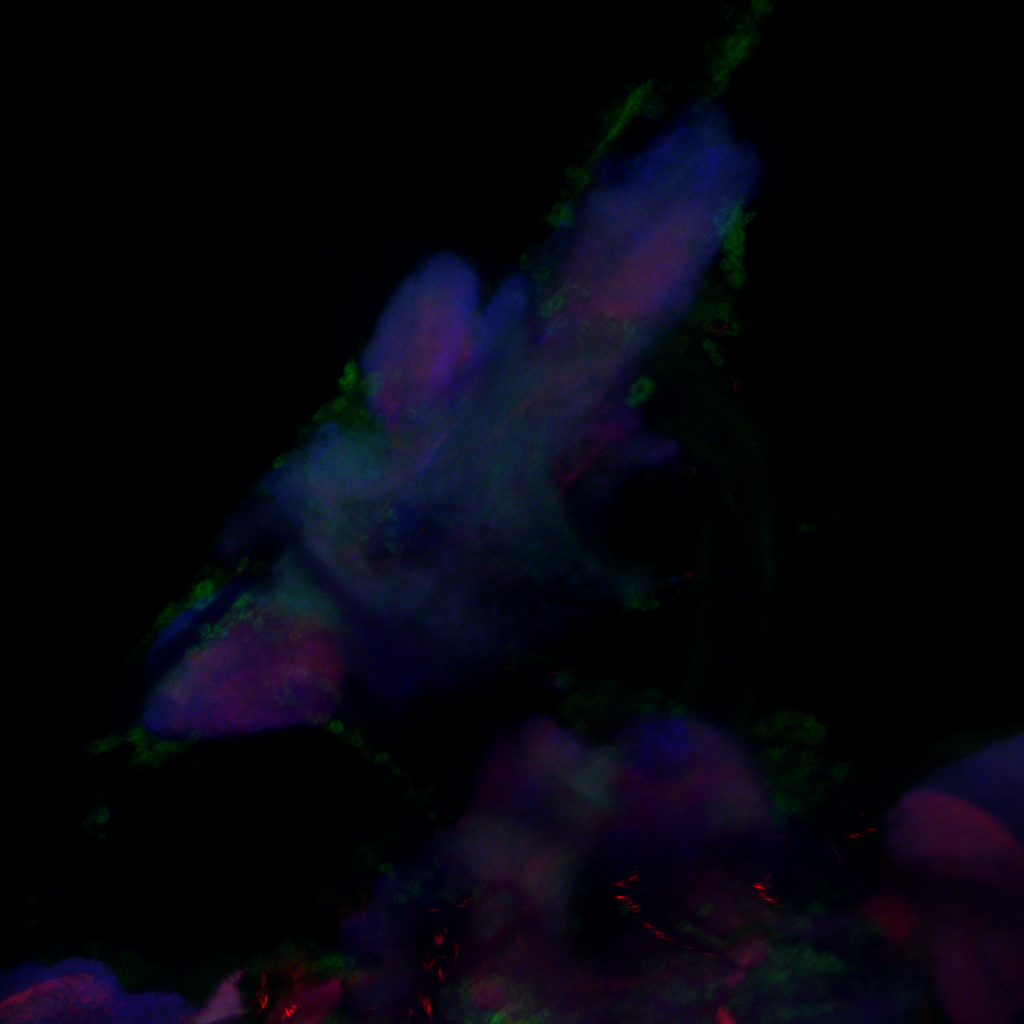
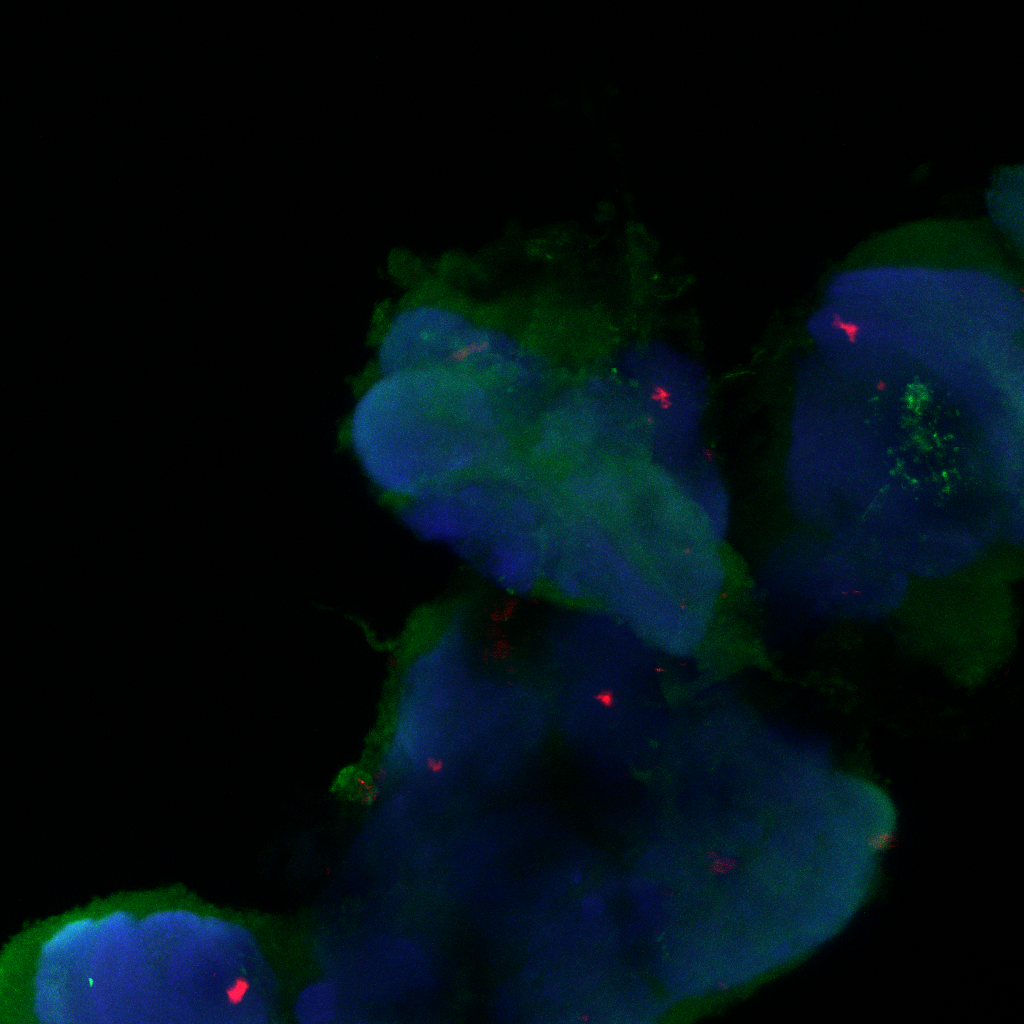
Category: Anatomy, Foxp, genetics, Operant learning, PKC, PKC_localisation | No Comments
